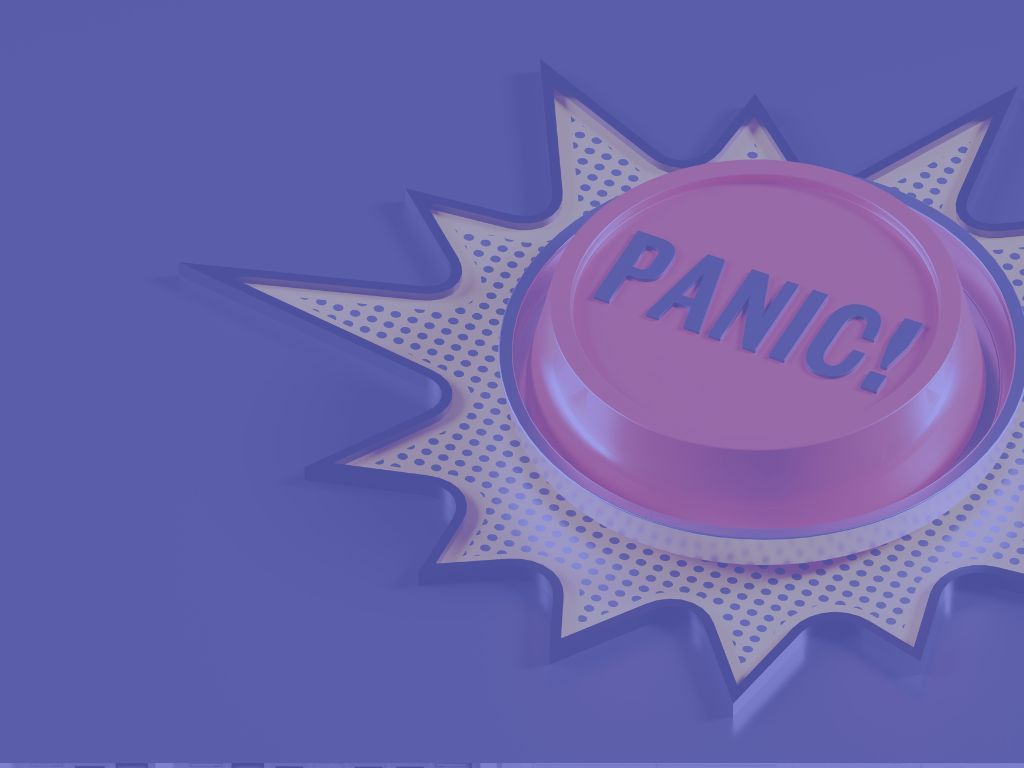Now more than ever, the expression “any publicity is good publicity” does not hold true. Any brand knows that today, not all press is good press. Every brand is one headline away from a crisis. Whether it’s an interview gone wrong, an unexpected soundbite, or a well-intentioned social media post that reaches the wrong audience, the backlash is often swift and overwhelming.
While it might be impossible to predict the next controversy, you can take steps to prepare your future response. Crisis PR is not just about dealing with a crisis after it’s already unfolded. It’s also about developing a plan for handling potential crises, and working to prevent them from occurring in the first place. This article offers a deep dive into the key principles of crisis PR, a look at real-life crisis PR in action, and how agencies like LaRue can help clients navigate the firestorm.
What Is Crisis PR—And Why It’s More Than Damage Control
At its core, crisis PR aims to preserve or rebuild a brand’s reputation before, during, or after a crisis has occurred. The goal is to restore a positive public perception of the brand, work to foster renewed trust, and try to repair the customer-brand relationship. That said, crisis PR is about more than just reacting to a disaster or major brand mistake. It’s also about taking a proactive approach by planning for crises before they happen and developing procedures for dealing with them.
The stakes today are higher than ever. Between cancel culture, social media, and the 24/7 news cycle, there are more opportunities to make mistakes and have these missteps broadcasted in front of a large-scale audience. A crisis PR agency offers both outside perspective and operational speed when it matters most. Tensions tend to run high within a company during a crisis. Crisis PR agencies come up with solutions from an objective point of view, providing a clear path through the storm to the other side. With focused expertise, crisis PR agencies are also equipped with dedicated resources that can help you navigate challenging situations in a timely manner, one step at a time.
The Brands That Got It Right (And Why)
There are no shortage of real-life brand crises to point to when highlighting the importance of an experienced crisis PR agency. The brands that tend to endure once the smoke clears are those that handle the crisis with transparency and clarity. Here are two examples of smart brand crisis responses:
The Tide Pod Challenge
In early 2018, the so-called “Tide Pod Challenge” started to gain popularity on social media, tasking teens with posting themselves placing the detergent pods in their mouths and biting into them. Evidently, Tide had a crisis on its hands- its pods are in no way edible, and viral videos were popping up across platforms encouraging their consumption. In response, Tide partnered with football star Rob Gronkowski to film a public service announcement that made it clear tide pods were not for eating.
Tide kept all of their social media posts on the subject brief, focused, and clear: tide pods are for cleaning laundry, not consuming. Their response was quick and multi-pronged. Their CEO released a statement asking family members to talk to their teens and explain that their safety is more important than a moment of viral attention.
The Tide social media team also responded to various consumer posts urging them to immediately contact poison control or seek medical attention if they had participated in the challenge.
Crock-Pot and This is Us
Crock-Pot became an overnight villain after an episode of the popular TV show This is Us aired in January 2018, featuring the death of beloved character Jack Pearson following a house fire started by an old, faulty slow cooker.
Across message boards and social media platforms, a discourse rapidly started to spread that Crock-Pots were unsafe and that the appliances should be discarded.
At the time, the Crock-Pot brand didn’t have a social media presence. To address rampant criticism of their brand, they created a social media account under the handle ‘CrockPotCares’.
They posted a message that directly referenced the TV show, honoring the character. At the same time, they also highlighted their decades-long track record in appliance safety and assured customers that this was a highly unlikely, fictional event in a show.
In the days after the episode aired, the Crock-Pot social media team continued to respond to posts expressing concern or fear about the appliance in relation to the show by acknowledging their feelings and providing reassurance that Crock-Pots are in fact safe.
In addition, Dan Fogelman, the creator of This is Us, made a post asking viewers not to blame Crock-Pot. Further, the brand partnered with the actor who played Jack Pearson, Milo Ventimiglia, to create a Super Bowl ad in favor of Crock-Pot, featuring the tagline ‘Crock-Pot is Innocent”.
Both of these examples represent an interesting type of crisis that is becoming more common in an increasingly digital age. In both cases, the brand itself didn’t do anything to cause public outcry.
Their products were used or featured in an unintended way through media, and this resulted in unintended consequences. Both of these brands were able to handle an unexpected crisis well, and came out the other side without suffering an overwhelming hit to their reputations.
Certain core aspects of their PR response helped support this outcome, including:
- Clear values communicated early: Tide and Crock-Pot both made it clear that public safety was their main concern in response to these crises. Tide focused on highlighting the intended use of their product, while Crock-Pot emphasized their long history of consumer safety.
- Authentic spokesperson who didn’t over-polish the truth: In each case, these brands partnered with a well-known public figure to get the message out. For Tide, this meant making it clear that Tide pods are for laundry and nothing else. For Crock-Pot, it meant emphasizing the family bonding that can occur around food when you have a safe appliance to rely on.
- Timely acknowledgment + action + follow-through: With both of these crises, immediate acknowledgement of the crisis was important. Tide needed to respond quickly to mitigate the public health risk of the challenge, and to follow up to ensure that any participants would seek out medical attention if they did ingest the product. A quick, caring response from Crock-Pot was also essential to ensure they did not lose consumer trust, and manage newfound fear surrounding their product.
What They Did Right
Both Tide and Crock-Pot controlled the narrative without sounding defensive. This is especially impressive considering these are crises they could not have anticipated. Instead of blaming the teenagers who started the challenge or the show writers who created the episode, each brand turned their attention to the crisis at hand and prioritized safety over blame. Both brands used existing values to guide the response, emphasizing consumer protection.
Additionally, their social media teams both implemented a cohesive communication strategy that went beyond the initial post addressing the crisis, continuing to follow-up by replying to consumer posts in a clear, consistent fashion.
The Brands That Blew It (And Why)
There are plenty of brands that have not handled crises with such skill. These kinds of PR fumbles often remain in the public memory even longer than those that are done well. After all, the end goal of crisis PR is for customers to be able to move forward and regain a positive relationship with the brand in question. These two brands were unable to achieve that goal:
Ticketmaster and the Eras Tour
The public perception of Ticketmaster was seriously soured in late 2022 when Taylor Swift announced that tickets for her Eras Tour would be going on sale via Ticketmaster. Certain ‘Verified Fans’ had been notified that they would be able to participate in an exclusive pre-sale before ticket sales were opened to the general public.
During the pre-sale, many fans had difficulties with the Ticketmaster platform, experiencing glitches, delays, and an inability to check out. Many verified fans were unable to purchase tickets, and Ticketmaster ended up cancelling the public sale, stating that all the tickets had been sold during the presale.
Fan outcry was loud and immediate, with thousands of fans expressing their dismay online at losing out on tickets they had in their cart during the presale or not getting the chance to participate in the sale at all. Ticketmaster’s response to the crisis fell short on several fronts.
Their first statement did not contain an apology. They quickly retracted this statement and released a new one with apologetic language, still blaming the crisis on Swift’s popularity and their site’s inability to handle the website traffic.
In the days and weeks that followed, many tickets showed up on reseller sites with an exorbitant upcharge, causing renewed frustration that these tickets hadn’t gone to fans directly during the Ticketmaster sale.
In 2023, Ticketmaster and its parent organization Live Nation faced a Senate hearing regarding their place in the industry, spurring accusations that Live Nation is a monopoly. The hearing emphasized that ticket sales should face increased regulation and that there should be more transparency in ticket pricing and distribution.
Southwest Airlines Holiday Disaster
During the 2022 holiday season, Southwest Airlines put itself squarely in the middle of a major PR crisis. A big storm caused flights across the country to be delayed or cancelled, but most airlines were able to rebook flights and move on in a day or two. Southwest was the exception: they cancelled nearly 17,000 flights and about two million passengers were unable to reach their holiday destinations. The airline’s scheduling system became inoperable, and their communication systems also broke down, leaving passengers in the dark about the status of their flights.
Southwest’s customer service team was overwhelmed by passenger inquiries, leaving questions unanswered when communication mattered most. Southwest’s PR response was poorly received. The company apologized, but deflected blame. They tried to pin the delays in flights and communication on the storm, airport officials, and their own employees.
Company spokespeople provided conflicting statements regarding the cause of the delays. Overall, their excuses fell short, especially since they failed to provide passengers with clear guidelines on next steps.
Outdated technology infrastructure and inadequate customer support resources contributed to the disaster, but Southwest did not immediately take steps to admit or address these foundational issues. The Department of Transportation would eventually fine Southwest $140 million for their failure to adequately handle the situation. Southwest also had to pay out $600 million in reimbursements to passengers affected by the cancellations.
What Went Wrong
Both Ticketmaster and Southwest only made the situation worse in their response to these crises. These are two clear examples of what not to do when faced with a challenging situation.
The companies both engaged in blame-shifting and denial, and displayed a glaring lack of transparency. They also failed to rectify the situation in a timely, satisfactory manner for the customers involved. In each case, the result was a lasting blow to public perception and consumer trust.
LaRue’s Crisis PR Framework
LaRue has a proven, proprietary model for crisis response. LaRue expertly guides clients through each step of a crisis. From the initial response to lasting follow-up, LaRue aims to ensure that brand integrity and perception are preserved, and that the customer/brand relationship is safeguarded. Our six step approach is as follows:
- Step 1: Rapid Situation Analysis: The first step is identifying and taking stock of the situation as it stands. It’s important to determine what the media narrative is, what’s true, and what’s at stake. LaRue can help you triage a crisis the moment it begins, before it has the chance to spiral out of control.
- Step 2: Internal Alignment: It’s crucial to get everyone on the same page, fast. From the CEO to the legal team to the communications department, it’s essential that everyone understands how the crisis will be handled. This is the best way to guarantee that your audience will perceive a cohesive, seamless PR response.
- Step 3: Values-Driven Messaging: Clarifying the messaging before any statements or interviews go live is another important part of creating a well-intentioned, successful crisis PR response. LaRue can help you isolate your brand’s core values and translate them into targeted messaging efforts.
- Step 4: Strategic Spokesperson Deployment: In a crisis, customers look to the brand itself for a statement. Too many statements can muddy the messaging, and not enough can look like avoidance or denial. A crisis PR agency like LaRue can help you strategically select the right spokesperson (or spokespeople) for the job, and make sure they stay on message.
- Step 5: Multi-Channel Rollout: Often, the best responses are multi-faceted. A crisis PR response should not be one-and-done with a single statement. Responses should be posted across various platforms, including different social media sites, owned channels, and in the press. The tone, content, and format of the message should be customized for each individual channel.
- Step 6: Long-Term Rebuild Plan: LaRue understands that crisis PR is not just about surviving Day 1. It’s about making sure your brand can weather this storm and have a long future. LaRue will help come up with an immediate response as well as a long-term plan for rebuilding your brand’s reputation and perception.
Why You Can’t Wing It—Even If You Think You Can
One of the biggest mistakes brands make is endorsing the mindset of, “We’ll figure it out if something happens.” No brand should be completely unprepared for a crisis. Instead, you should expect that one will happen so you’re ready if it ever does. While no one wants a crisis to occur, it’s much better to have existing protocols in place in case one does than it is to bury your head in the sand and hope that a crisis never occurs.
Brands can invest in crisis PR before a crisis. Media training can help prepare your brand ambassadors and staff to successfully interact with the media and expect the unexpected.
Preparing a dark site template ahead of time ensures you have a dedicated space to post crisis updates and handle communication seamlessly during a stressful time. Pre-aligned roles are a great strategy for making sure that every team member knows what they will be responsible for in the case of a crisis.
Developing crisis protocols before you actually need them will support a more strategic, targeted response if you find yourself and your brand hit by a sudden crisis.
At the end of the day, speed is nothing without strategy. You might think you can wing it and come up with a response on the fly, but when you go into a crisis unprepared, you run the risk of making things worse.
What to Look for in a Crisis PR Agency
As you look ahead to prepare yourself for potential crises, it’s important to partner with the right crisis PR agency. Look for an agency that has proven experience under pressure. Ask for case studies of crisis responses they’ve spearheaded, and look at how the brands are faring now. It’s also important for an agency to have both strong storytelling skills and operational command.
Seek out an agency that is able to balance both legal and emotional resonance. You want your brand to stay on solid footing, but you also don’t want to risk alienating your audience with a cold approach.
Finally, find an agency that has an understanding of both traditional media and social backlash dynamics. The ability to navigate both of these channels will be invaluable in a crisis.
When a crisis hits, brands don’t recover based on sheer luck—they bounce back by preparation. If you want to ensure you’re equipped to handle any potential roadblock, investing in crisis PR now is the right move.
Enlisting a crisis PR agency before you think you need one is the best way to make sure you’re ready to take action in case your brand finds itself at an unexpected crossroads. In a crisis, the loudest voice wins—make sure yours is honest, human, and clear.
Reach out today to learn more about LaRue’s experience with crisis PR, and how we can help you prepare for any challenges that might come your way.



